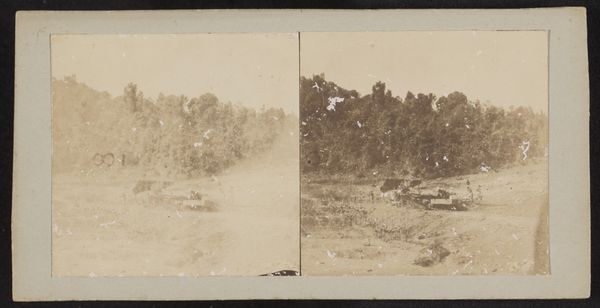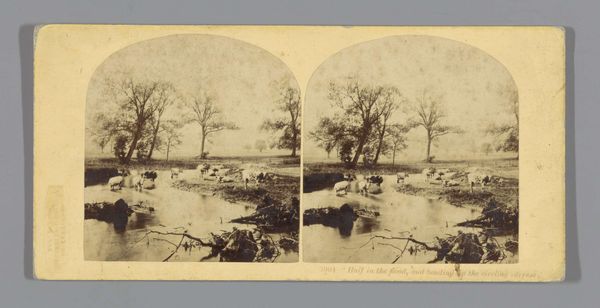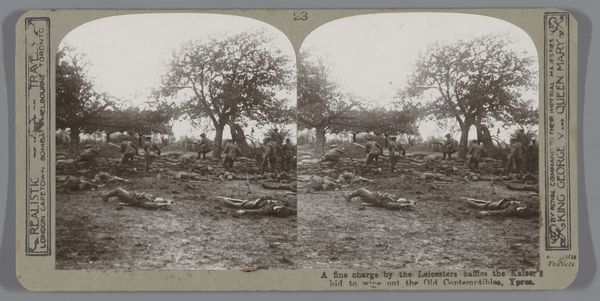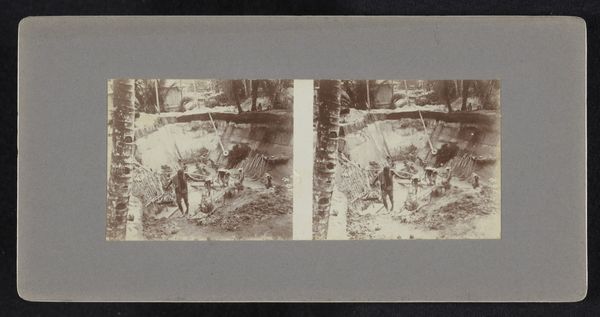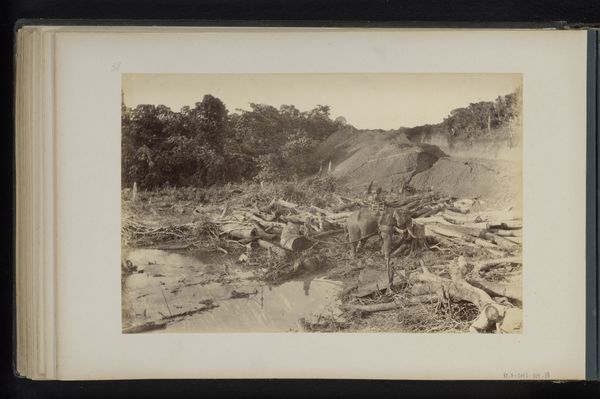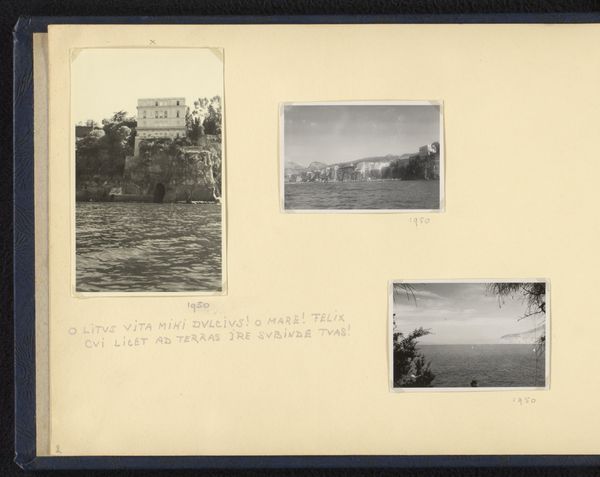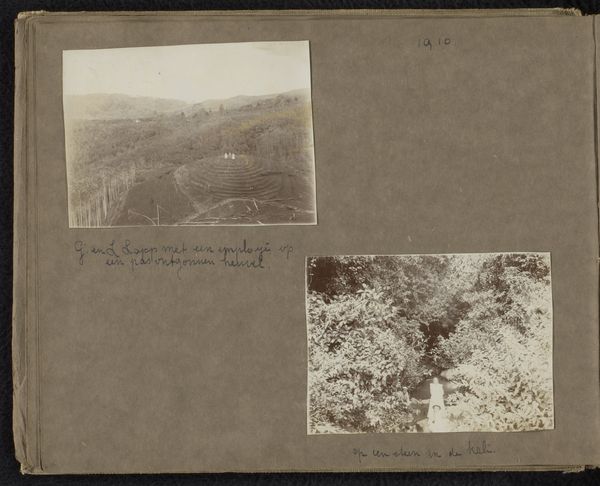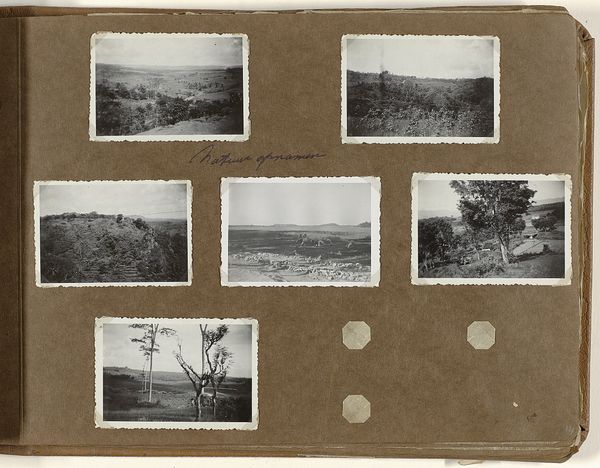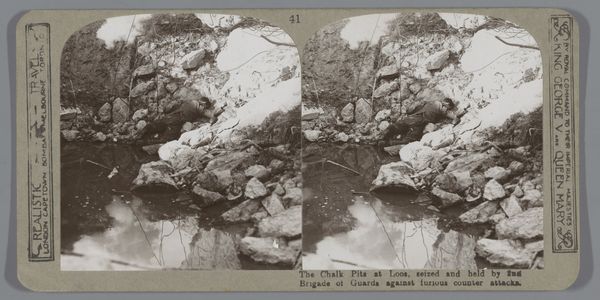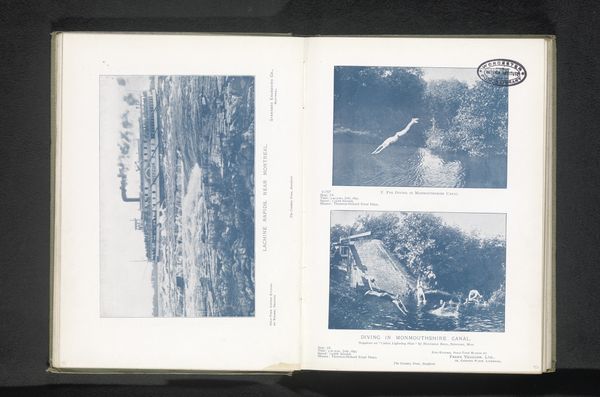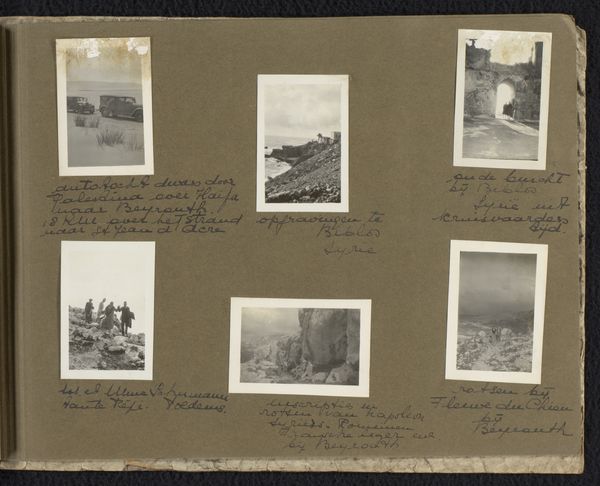
The price of victory!-Brave lads who fell in an early morning raid on the Hun lines 1914 - 1918
0:00
0:00
Dimensions: height 85 mm, width 170 mm
Copyright: Rijks Museum: Open Domain
Curator: What strikes me immediately about this gelatin silver print, titled "The Price of Victory!—Brave lads who fell in an early morning raid on the Hun lines," and likely taken during the First World War, is its quiet intensity. It really gets to me. Editor: "Quiet" is a great way to describe it. The way the landscape almost cradles the devastation, the contrast is so sharp; smoke blooms amidst lifeless figures sprawled on the ground. It has a terribly romantic bleakness, doesn’t it? Curator: I think the romanticism is really intentional. This was circulated as a "Realistic Travels" photographic print, placing it in a particular lineage of war imagery meant to stir patriotism and shape public perception. It evokes, and perhaps even exploits, the visual tropes of earlier battlefield painting to lend dignity and meaning to industrial carnage. Editor: You can feel that tension between document and dramatization. There is that very theatrical smoke, but then the stark detail of the discarded rifles beside each fallen soldier—they feel so real and abandoned. You almost wonder if it’s staged; but either way, I find it so visceral. What do you read in its public role? Curator: That's the challenge, isn't it? Disentangling propaganda from sincere memorial. War photography in this era walks a tightrope. It had to justify the war effort, so images of suffering also become, paradoxically, testaments to noble sacrifice. Even calling them "brave lads" is like that. The language flattens the individual agony of it. Editor: The title really stings me in that sense—using their finality as a product for this 'realistic travel.' Didactic like that, it does take you far out of their real landscape. Looking at this from that angle, all I want is their names, not a title. Curator: Yes, the inherent tension. It highlights how deeply intertwined visual media, nationalism, and grief were, and remain, shaping our collective understanding of war. So thank you, that personal interpretation gives this archival moment fresh importance. Editor: Of course, I think understanding this image hinges on acknowledging our emotional response as something to consider, and not overcome. I really appreciate being able to engage in what is ultimately something that feels intensely, tragically human.
Comments
No comments
Be the first to comment and join the conversation on the ultimate creative platform.
